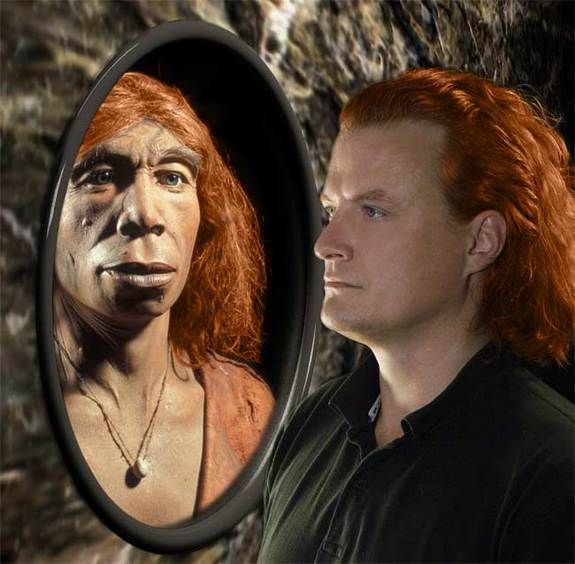Myth Busted: Ancient Humans May Not Have Been Redheads

Ancient humans found with red hair weren't necessarily redheads in life, but may have acquired their carrot tops after death, a new study finds.
A team of researchers examined the processes that degrade locks, ranging from exposure to the sun's powerful rays or being eaten away by microbes. These processes, many of which begin while a person or animal is still alive, can leave hair with an unnatural, reddish hue.
The findings are not only important for archaeology, but also for conservation efforts and forensic investigations, according to the study published Oct. 21 in the journal Proceedings of the Royal Society B. [5 Health Risks of Being a Redhead]
Silvana Tridico is a forensic scientist at Curtin University in Perth, Australia, and co-author of the study. She's been studying hair for the past 30 years. "There aren't too many people who do it at the level I do it at," Tridico said.
In the study, Tridico and her colleagues examined about 450 hairs from a variety of animals, including ancient humans, modern humans and woolly mammoths. The researchers first examined the hairs under a microscope at low magnification, recording the locks' color, length and physical profile. Using a scanning electron microscope, the scientists examined a fraction of the hairs in much greater detail, revealing the strands' surface contours.
They found that many of the processes that degrade hair occur not only after death, but also in living animals. Microbes, especially fungus, appear responsible for much of the degradation, but sunlight and other factors also play roles.
Hair today, gone tomorrow
Sign up for the Live Science daily newsletter now
Get the world’s most fascinating discoveries delivered straight to your inbox.
Hair contains two kinds of pigments, one that produces dark hair and one for red hair. The sun degrades these pigments in a process known as photo-oxidation, but the hair pigment for darker hair isn't as stable as the one for red hair, so hair turns a reddish color when exposed to sunlight for long periods of time. This is why the hair of ancient aboriginal people in Australia has a reddish tint, Tridico said.
The researchers also found that fungi had invaded many of the hairs they studied. Some of the hairs were "just covered by fungus," Tridico said. When a layer of tiny fungal filaments called hyphae coats a hair, it can give the strand a reddish color, she said. And since fungi need heat and moisture to grow, finding them reveals something about the environment in which an animal lived.
Sometimes, hair can pick up red pigmentation from its environment. Iron from soil or permafrost can seep into hairs, staining them red, Tridico said. For example, some of the "bog people" who have been found preserved in peat marshes in Northern Europe have reddish hair. But the bogs contain a lot of tannins, the bitter substance in tea or wine, which can degrade the pigments in hair, Tridico said. While she hasn't examined the hairs from the bog people herself, she said, "I strongly suspect tannins have infiltrated them and given them a reddish tinge."
Like human hair, animal fur can redden after death, too. Some scientists say that woolly mammoth fur was a strawberry-blond color. But "that garish orange color can't possibly be natural," Tridico said. Instead, the animals probably had a layer of colorless hair that soaked up iron from the permafrost, she said.
The only process of hair degradation that occurs exclusively after death is a darkening of hair roots known as postmortem banding. Because this only happens in certain conditions, it can be useful in forensic science, helping investigators reconstruct the events and environment at the time of death or burial, the researchers said.
The findings show that hair can reveal a lot about a person in both life and death. "I want to raise awareness of hair," Tridico said. "I think it's really misunderstood and undervalued."
Follow Tanya Lewis on Twitter and Google+. Follow us @livescience, Facebook & Google+. Original article on Live Science.












